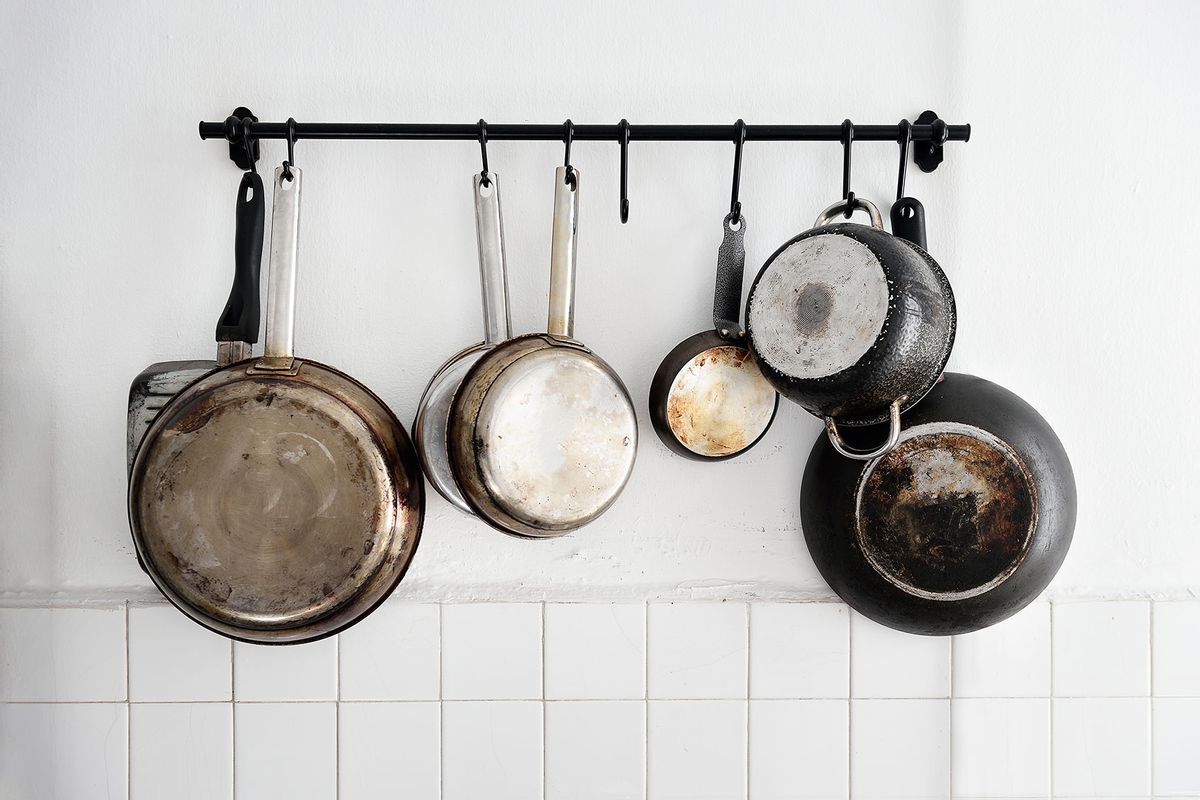The kitchen should be a fun, enjoyable place where you can explore foods, celebrate flavors, express your creativity or even glean some "therapy" through your cooking. But what pots and pans do you actually need to get started?
Many places sell "starter kits" with three or four pots and pans each, which are neat, but you don't really need one of those.
For most, having a few necessities on hand is best. You'll need:
- A small nonstick skillet
- A cast iron skillet
- A larger nonstick skillet
- A stainless steel skillet
- A saucepan
- And a pot or two
That's really it. There is, obviously, much more cookware out there and much of it is stellar, but if you're a true beginner, don't feel pressured to spend money on that superfluous stuff. Buy high-quality, which will last you for some time, but also don't feel the need to spend exorbitant amounts of money on the "top of the line" stuff.
Most of these products are made with stainless steel or aluminum, aside from the cast iron, but feel free to buy ceramic if you'd be more comfortable with that. There's also copper cookware, but that can be very pricy.
Sizing-wise, I'd aim for anything from an 8" to a 12" ; I like a tiny nonstick for eggs, but generally, you can use various sizes for the same tasks without much of an issue.
Now that you have the basics down, here's a quick overview of the different types of cookware you'll come across in your search.
Nonstick
A bit more streamlined and utilitarian than other pans (i.e cast iron), nonstick pans are great options for eggs of any kind, sautéeing various proteins, breakfast items, pan-roasting vegetables and much more. I also like them a lot for fish, from scallops to bass.
Nonstick also makes for a great "everyday" pan for whatever random item you might be cooking up.
We need your help to stay independent
Stainless Steel
A stainless steel pan is a good option to have on hand, as well; it's perfect for browning or sautéing, as well as making pan sauces.
To me, a sauté pan and a skillet an be used pretty interchangeably, but there are certain tasks that might make more sense in one over the other. Essentially, a skillet (sometimes called a frying pan) has more sloping sides, while a sauté pan will have straight sides. A quintessential dish to make in a sauté pan or skillet is risotto.
You also can't forget a saucepan and/or a good ol' pot, for making sauces and pastas (of course), potatoes, boiled vegetables, grains and so, so much more. A large, deep pot (or sometimes a called a stock pot) is also good to have on hand; it's perfect for if you're boiling a ton of pasta, making a whole cauldron of marinara for a family gathering ,or making a simmered-all-day-long chicken soup when you're feeling under the weather.
Generally, I also love oven-safe pans, especially for dishes that might be best finished in the oven or under the broiler.
Cast-iron
Cast iron is legitimately perfect for steak, but it's also great for anything you'd like to sear, as well as some desserts and pizza crusts. It's also wonderfully heavy and durable. They distribute heat more evenly than other pans.
Generally, I also love oven-safe pans, especially for dishes that might be best finished in the oven or under the broiler. Nothing is as reliable as cast-iron when it comes to that.
Honestly, I don't work with cast-iron all that much. It's quite literally the only way I'll cook a steak, but for everything else, it can just be simpler to work with other pots and pans. "Properly" cleaning and seasoning a cast-iron is just too much of an undertaking for me, frankly.
Want more great food writing and recipes? Subscribe to Salon Food's newsletter, The Bite.
Good to have, but not necessary
Dutch ovens are perfect for braising, but can sometimes be absurdly expensive, so I'm not calling it a must-have. Grill pans and woks are really cool, too, but also not a "must." There are also crepe pans or omelette pans, but you definitely don't need those (but they could be fun for the right cook).



Shares